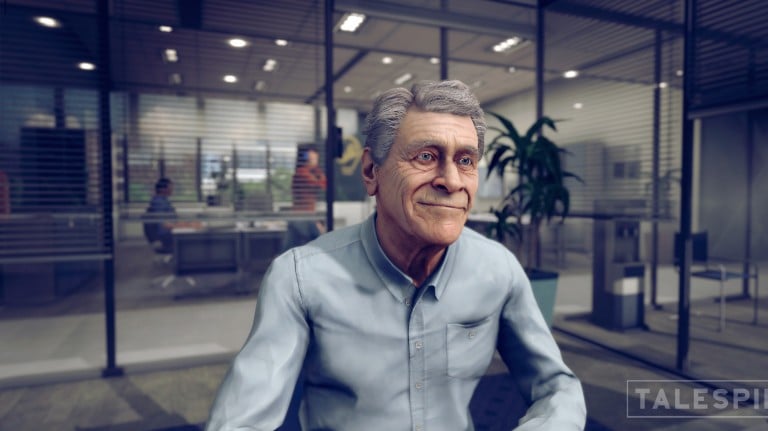Meet Barry: his sole purpose in life is to listen patiently, and then protest or sob a little as you fire him from an imaginary job in virtual reality.
Disposable hero: He was created by Talespin, a company that offers virtual reality workplace training. Barry and other VR characters were developed to help teach people “soft” management skills—such as how to let someone go without causing a scene. If you are too blunt with Barry, he’ll put his head in his hands; other missteps will cause him to shout and yell.
Learning tool: This might seem bizarre, even dystopian, but virtual reality is gaining momentum as a training tool. The technology can provide a heightened sense of realism that aids the learning process, and it can allow people to practice doing things that would be impossible otherwise. VR is used to teach people to perform safety tasks, for example. But it is also increasingly being used to train new employees at places like Walmart and Chipotle.
Office space: You can expect this trend to spread to offices in coming years. “We are seeing repeated interest in building training products around interviewing skills, navigating difficult conversations, consultative selling, performance reviews, and identifying diversity and inclusion best practices, to name a few,” says Kyle Jackson, CEO of Talespin.
Unreal feeling: Computers and algorithms are sometimes now used to monitor workers’ output and performance. But while it’s common to think that social and emotional skills are exempt from this automation creep, Barry suggests otherwise. “Soft skills are ranked among the most important for any organization as they discuss their needs for the future of work,” Jackson says. “We don't see this slowing down any time soon.”
Uncanny colleague: The catch with Barry and other virtual characters, in case you didn’t guess, is that their effectiveness depends on how convincing they are. Barry looks quite realistic for an avatar, but Jackson says the character follows a set script—so it can’t interact in a very natural way.
Learning process: Avatars behave more naturally if they’re powered by machine learning—but it’s going to be a long while before these characters exhibit, or respond to, body language in realistic ways. As Danielle Levac, a professor at Northeastern University who specializes in using VR for rehab, says: “If you’re not able to escape the notion that it isn’t a real person, it’s not necessarily going to transfer.”

